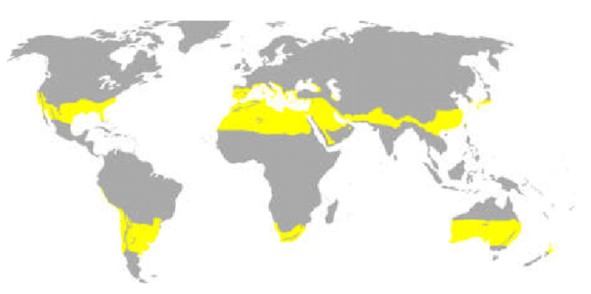- Definition and Types of Energy
- Myths And Misconceptions About Energy
- The Relationship Between Energy and Environment
- Climate Change and Carbon Footprint
- Greenhouse Gas Effect
- The Role of Human-Induced Greenhouse Gases and Energy Consumption
- Energy Efficiency and Sustainability
- Renewable Energy Sources and Future Perspectives
- Play and Learn
- Solar Energy Conversions
- Solar Energy Worldwide
- Solar Energy in Partner Countries
- Positive and Negative Impacts
- Technologies for Harnessing Solar Energy
- Solar thermal energy technologies and applications
- Electricity Generation Methods
- Passive Heating and Cooling of Residences with the Sun
- Concentrator solar power (CSP) systems and electricity generation
- Systems and Applications That Generate Electricity directly from solar rays
- Photovoltaic Cells and Panels
- Domestic PV Systems
- Off-Grid PV Systems
- Hybrid Connected Systems
- Materials Used in PV Cells
- Play and Learn
Solar Energy Worldwide

The most efficient regions for utilizing solar energy are located between the latitudes of 35° North and 35° South, known as the "Solar Belt" of the Earth. This region experiences high annual sunshine durations, and the solar energy potential ranges from 3.5 to 7 kWh/m². Countries such as Spain, Italy, Greece, Turkey, Egypt, Iran, China, Japan, the United States, and Australia are among those that can make the most use of solar energy.
Throughout human history, solar energy has been used in various ways:
- In the 4th century BC, the famous philosopher Socrates suggested that more windows should be added to the southern faces of houses to make better use of the Sun.
- In the 17th century, Galileo, by discovering lenses, pioneered efforts to focus solar energy.
- In 1860, research was conducted on collecting solar rays using parabolic mirrors and using them in steam engines.
- In the 1950s, solar energy systems began to spread in the United States and Japan, and the first photovoltaic (solar cell) panels were produced by Bell Telephone Laboratories.
- In 1984, the first large-scale solar power plant was established in Los Angeles, USA, reaching a capacity of 354 MW.
- In the 1990s, solar towers with capacities of 10 MW in California and 30 MW in Jordan were commissioned.
- In the 2000s, significant advancements were made in solar cell technology, and global solar energy production grew rapidly.
Today, solar energy plays a crucial role in the global energy transition. With the development of technology, the efficiency of solar panels has increased, and installation costs have decreased. As a result, many countries have started to use solar energy extensively.